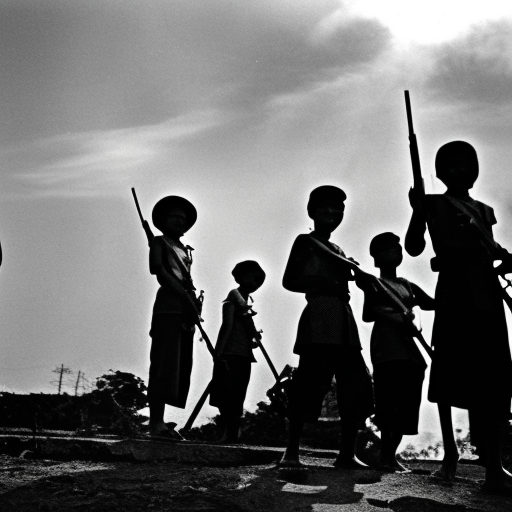Summary:
The Laotian Civil War was a conflict that took place in Laos from 1953 to 1975. It was primarily fought between the communist Pathet Lao and the Royal Lao Government, supported by the United States. The war was part of the larger Indochina Wars and had significant implications for the region’s political landscape.
Background:
Laos gained independence from France in 1953, but the country was politically divided. The Royal Lao Government, led by Prince Souvanna Phouma, aimed to maintain a neutral stance in the Cold War and prevent the spread of communism. However, the Pathet Lao, backed by North Vietnam and the Soviet Union, sought to establish a communist regime in Laos.
Course of the War:
The conflict began shortly after independence, with the Pathet Lao launching a guerrilla campaign against the Royal Lao Government. The United States, concerned about the spread of communism in Southeast Asia, provided military and financial aid to the Royal Lao Government. The U.S. also conducted a secret bombing campaign against the Pathet Lao and North Vietnamese forces in Laos, known as the “Secret War.”
The war intensified in the 1960s as the North Vietnamese Army (NVA) increased its presence in Laos to support the Ho Chi Minh Trail, a major supply route for the Vietnam War. The Royal Lao Government, with U.S. support, launched several offensives against the Pathet Lao and NVA. However, these efforts were largely unsuccessful, and the conflict became a stalemate.
In 1973, the Paris Peace Accords were signed, calling for a ceasefire and the withdrawal of foreign troops from Laos. The agreement also recognized the Pathet Lao as a legitimate political party. However, the ceasefire was short-lived, and fighting resumed between the two sides.
Outcome:
The Pathet Lao, with the support of the NVA, launched a major offensive in 1975. They quickly captured the capital city of Vientiane, and the Royal Lao Government collapsed. Laos was declared a communist state, and the Pathet Lao established a one-party government.
The Laotian Civil War had significant consequences for the region. The victory of the Pathet Lao and the establishment of a communist government in Laos further solidified the communist presence in Indochina. It also allowed North Vietnam to strengthen its position in the region and continue its support for communist movements in neighboring countries.
The war had a devastating impact on Laos. The country became one of the most heavily bombed nations in history due to the U.S. bombing campaign. The bombings caused extensive damage to infrastructure and resulted in the deaths of thousands of Laotian civilians. The legacy of unexploded ordnance continues to pose a threat to the population today.
The Laotian Civil War also had implications for the United States. The conflict highlighted the limitations of U.S. military intervention and the challenges of fighting a guerrilla war. It further fueled anti-war sentiment in the United States and contributed to the eventual withdrawal of American forces from Vietnam.
In conclusion, the Laotian Civil War was a protracted conflict between the communist Pathet Lao and the Royal Lao Government. The war had significant implications for Laos and the wider region, leading to the establishment of a communist government in Laos and further solidifying the communist presence in Indochina. The conflict also had a devastating impact on Laos, with extensive damage caused by U.S. bombings. The war highlighted the limitations of U.S. military intervention and contributed to the eventual withdrawal of American forces from Vietnam.












